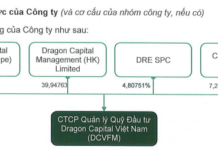According to Bangkok Post, Thai rice exporters warn that local rice varieties are at risk of extinction as farmers rush to cultivate a popular Vietnamese rice strain.
Charoen Laothamatas, President of the Thai Rice Exporters Association, believes the local industry is in a precarious state, with the production of Thai rice varieties such as fragrant Pathum Thani and KB 79 rice declining, being replaced by a Vietnamese strain called Khao Hom Phuang or jasmine 85, which offers higher yields in a shorter growth period.
“Up to 80% of packaged rice sold in Thailand is Vietnamese Khao Hom Phuang rice, causing Thai fragrant Pathum Thani rice to almost disappear from the market, as this type of rice has a higher yield, 1,200-1,500 kg per rai (1 rai = 1,600 m2), a shorter harvest time of only 90-100 days, and can be grown year-round. Pathum Thani fragrant rice yields 800-900 kg per rai, takes four months to harvest, and can only be grown once a year,” Mr. Charoen said.

A rice field in Thailand. (Photo: Reuters)
The Thai rice exporters’ association president also stated that Thai farmers might cultivate less Hom Mali rice (a fragrant, flower-scented rice variety) and opt for another white rice strain instead, as this type can be grown twice a year with higher yields.
“Thailand does not produce enough rice to meet the demands of farmers and consumer preferences. This leads them to seek foreign rice varieties, particularly those from Vietnam and China, where there is continuous support for R&D (research and development),” Mr. Charoen observed.
He urged the Thai Rice Department to expedite the development of new rice strains through R&D, aiming for higher yields per rai to reduce production costs.
Mr. Charoen also called on the Ministry of Agriculture and Cooperatives to amend regulations regarding allowing farmers to cultivate foreign rice strains alongside local ones to promote the development of Thai rice varieties.
He emphasized that the government must accelerate the advancement of the Thai rice industry by developing strains that meet market demands.
The US Department of Agriculture predicts that India will remain the largest rice exporter in 2025, followed by Vietnam and Thailand. Mr. Charoen stated that if Thailand takes no action on this matter, its market share among major rice exporters could decline.
Regarding brown rice, Thailand is losing its export market to India. Thailand primarily offers white rice, which still has a market in Iraq, Indonesia, and some African countries, he noted.






































